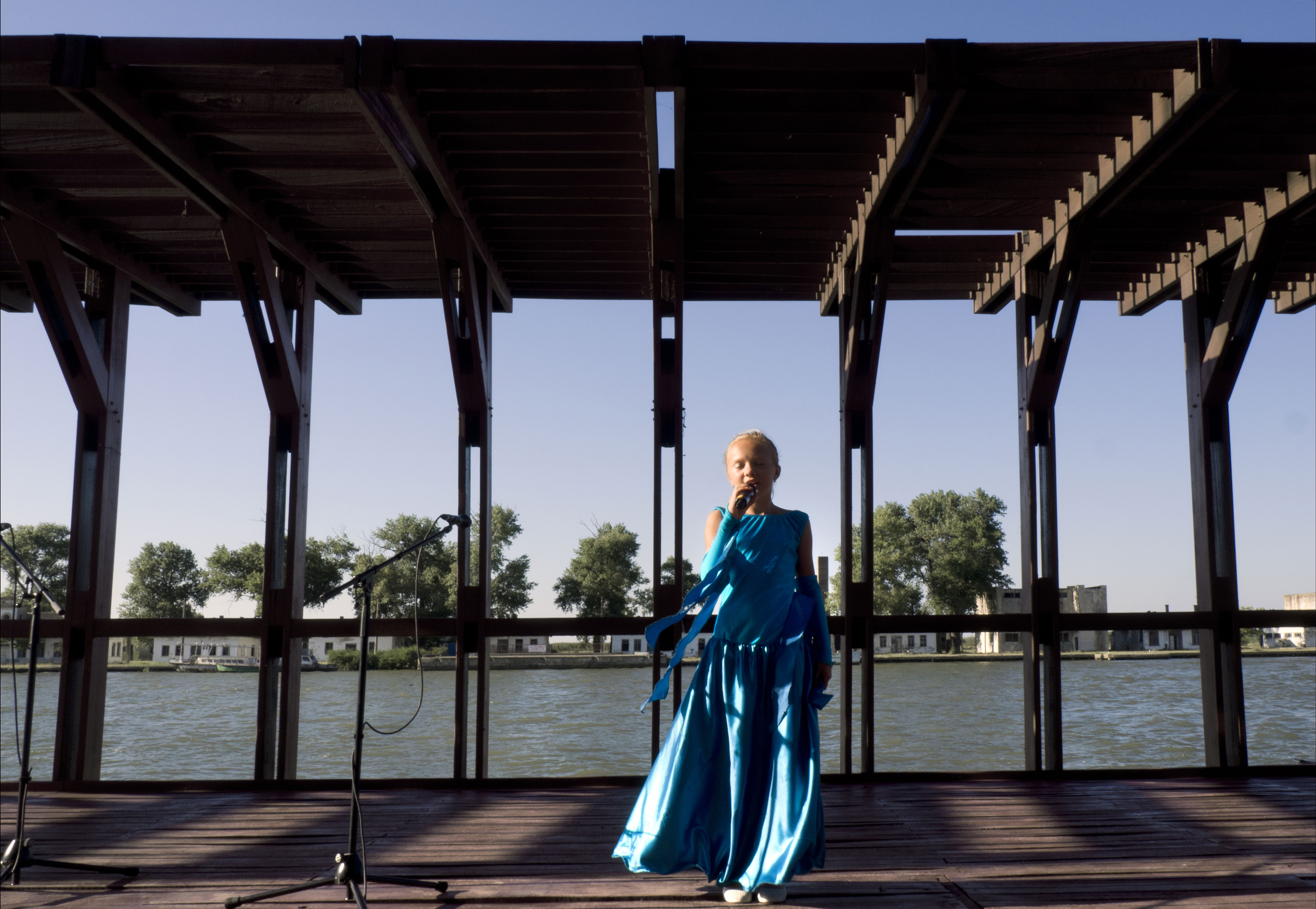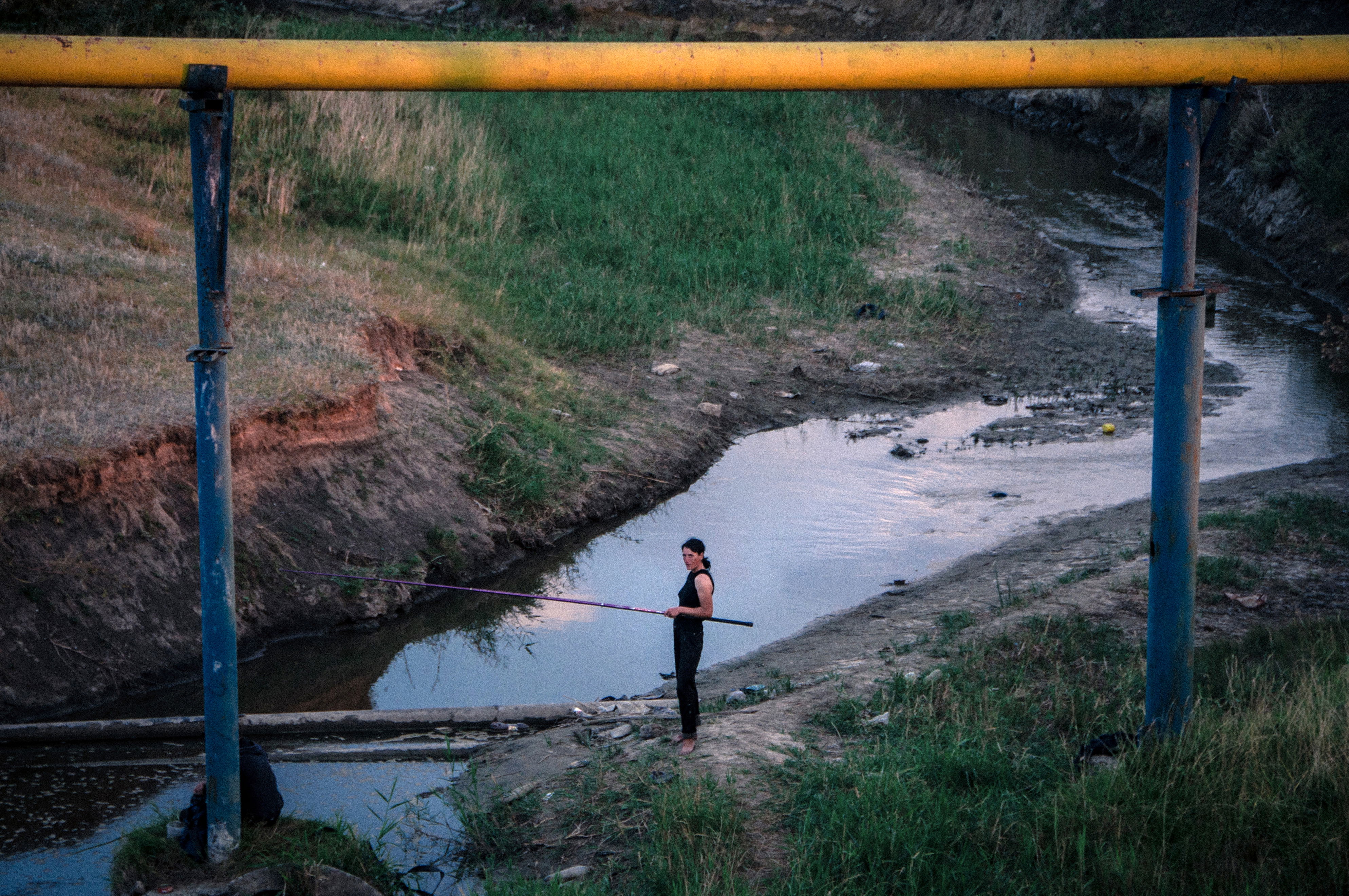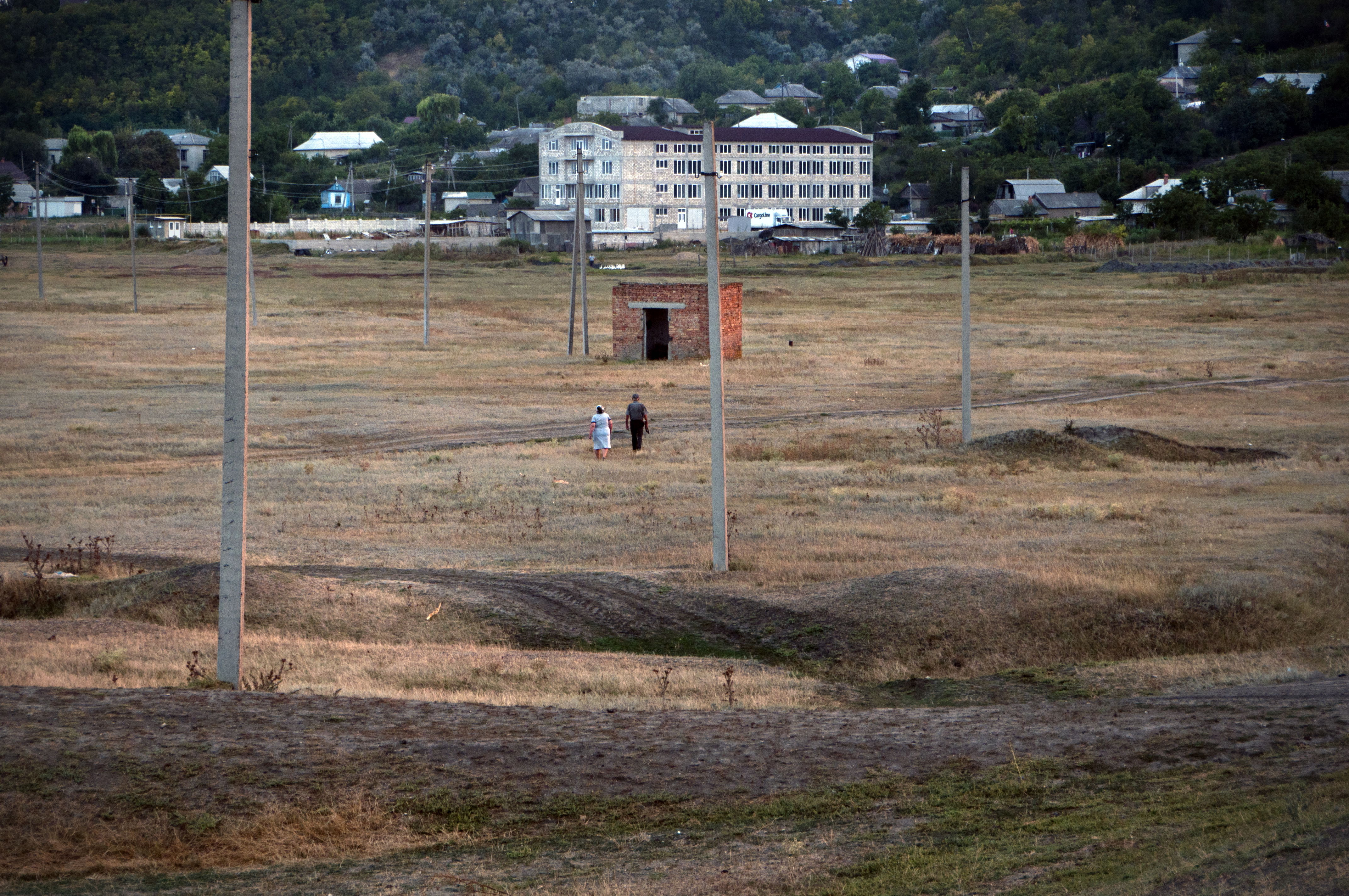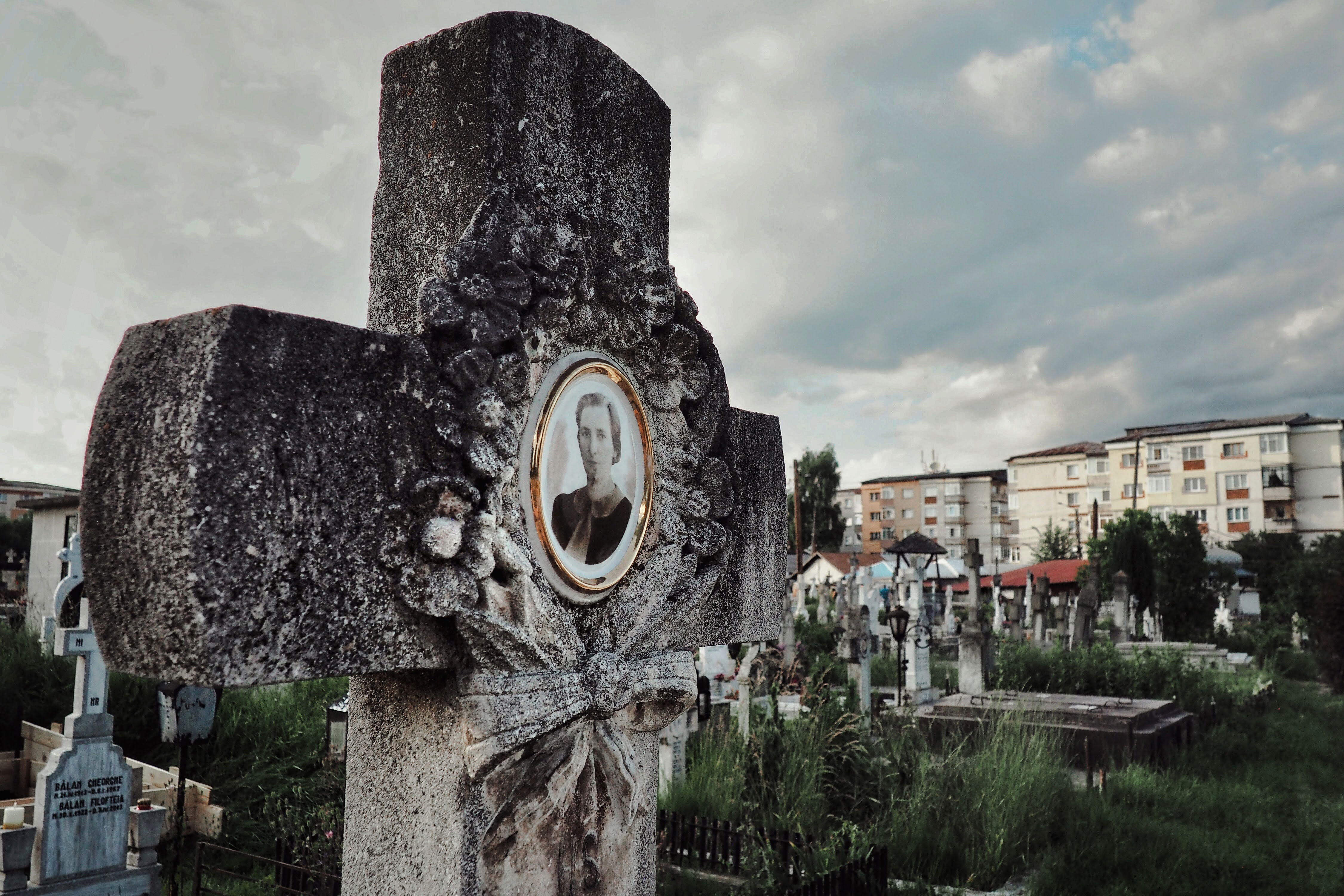Leisure in the Working-Class District
A malevolent personality that rose to lead a nation desired not only to be adulated as the symbolic mother of all children frozen every morning in formation, wearing pioneer uniforms, but also as a scientific genius, the savior of the country's industry. Merely uttering her wishes was enough, and the magic was fulfilled: overnight, she became a doctor in macromolecular chemistry. Together with her husband and the lackeys who fed her ego and psychosis, Elena Ceaușescu envisioned factories that would propel the country to the heights of the economy and apartment blocks that would serve as the home for bipedal ants. The first chemist of the Socialist Republic of Romania had a dream that transformed the destiny of entire generations.


At the beginning of the summer of 2023, I spent a month in a literary residency in Câmpulung, a small historical town in the Southern Carpathians. I lived in Villa Golescu, a museum of tranquility, but also of the tragedies of a long-disappeared family of intellectuals and politicians. I worked, ate, and slept in complete silence, amidst a lush garden located on the border between the old town area and the forest. Sometimes I would stroll down to the deserted center, full of magnificent buildings left in ruins and irreversibly marked by the footsteps of the departed. The Saxon craftsmen and merchants, with their Laurencius de Longo Campo and the first written mention of the town in 1300. The first capital of Wallachia. Princes. Rulers. The second printing press in Wallachia, the first paper factory. Schools with tradition. A cultural center since the 17th century. Ravaged by Turks. Heavy fighting in the First World War. The Titanic Waltz movie and the famous hats shop "La Măgeanu". Tudor Mușatescu (playwright and writer), Ion Barbu (poet and mathematician), Alexandru Davila (dramatist, diplomat and memoirist), Constantin I. Parhon (famous neuropsychiatrist and endocrinologist), Theodor Aman (painter), George Topârceanu (poet), Constantin D. Aricescu (poet, writer, playwright and revolutionary). The philosopher Constantin Noica, sent here for forced domicile, then arrested and sentenced to 25 years of hard labor. The literary critic, essayist and diplomat Alexandru Paleologu, pursued by the Securitate, hiding here under a different name, caught, arrested, and sentenced to 14 years of hard labor. The resistance of the partisans "the Muscel haiducs" - the Arnăuțoiu brothers and Colonel Arsenescu, arrested and executed by the communist regime, Elisabeta Rizea from Nucșoara, who supported the partisans and was arrested and imprisoned several times, the violinist Ioana-Raluca Voicu Arnăuțoiu, daughter of Maria Plop and Toma Arnăuțoiu, who was born and raised in the mountains until her mother was captured and sentenced for life. Extremely interesting and touching things, which distanced me from literature and rather pushed me towards research. I gathered information from the old volumes in the villa's library, from stained photo albums, I imagined pasts, filled the camera's memory card with uninhabited buildings. But, in order to write, I need life.


One evening, while looking at the satellite image of the city on Google Earth, searching for other uninhabited places to visit, I noticed on a hill at the edge of Câmpulung the cellular silhouette of an apartment blocks communist neighborhood. It looked like the network of symbols in an encrypted language, indicating the landing site for extraterrestrials. The next morning, I set off, well-equipped with prejudices about how everything would be gray, depressing, and even dangerous. I had read online that it was a kind of working-class ghetto, and that was enough for me. The neighborhood is called Grui and provided labor for the Melana Synthetic Fibers Plant. Built by order of Elena Ceaușescu herself, Grui and Melana gave birth to a community where children born approximately 40 years later now play among the ruins of the plant and return in the evening to do their homework in apartments designed to standardize and erase the personalities and privacy of the members of the workforce brought in from rural areas.


The last investor after the revolution, although committed to modernizing it, preferred to sell the plant for scrap metal. Former employees either retreated to the villages they came from, retired due to illness, or went to work abroad. Their children remained in the apartments, much more adaptable to the transition. For over 30 years, the appearance of Grui has remained almost unchanged, with small exceptions - the shades of the buildings are now beige-pinkish-orange and reminiscent of cafeteria sauces, the playgrounds are modernized, a new church has appeared, and a swimming pool has also been built. What I didn't find in Grui were crushed, defeated locals, burdened by worries, sadness at every corner, and dangers. The place welcomes you at the top of the hill with the air of a mountain resort. Sure, nobody exults there, as nobody really exults anywhere. But people are cheerful, children run around freely, play on the streets, and seem safe. The only tragic accidents are deaths caused by lightning strikes. There are some deserted buildings, but the rest are freshly painted, and there are flower gardens everywhere, thanks to those who couldn't come to terms with life in the apartment.


There's no litter on the ground, the spaces are wide, there's room to breathe, and in the distance, you can see the Iezer Mountains. The former market, an empty hall with glass walls, reminded me of the royal orangeries in Western Europe. Here and there, a kiosk, a shop selling worn clothes, and second-hand equipment. Nothing new, nothing to even hint at a timid prosperity. People socialize in front of the blocks, in the small park in the middle of the neighborhood, and at church. Locals spend their holidays in the countryside or in the same places where their grandparents used to go, at the mineral-rich waters of the balneary health resorts, another communist era legacy.


I returned to the villa and wrote fiction again. The same time, this project on the well-being of working-class neighborhoods stemmed from the photographs taken in Grui that day. It explores the positive outcomes resulting from the forced creation of these communities, such as the development of strong social bonds, but also what people in such places do to escape confinement. This is a topic that has occupied my thoughts extensively, yet remains unresolved. Symbolic of the hundreds of such neighborhoods that emerged before 1989, Grui District in Câmpulung stands out, representing the thousands of apartment blocks where people found themselves relocated in Romania, and the villages simply erased from the map. It also represents the descendants of these workers, who will never know what life would have been like if things had been different.


Text and photos: Ana Alexandrescu